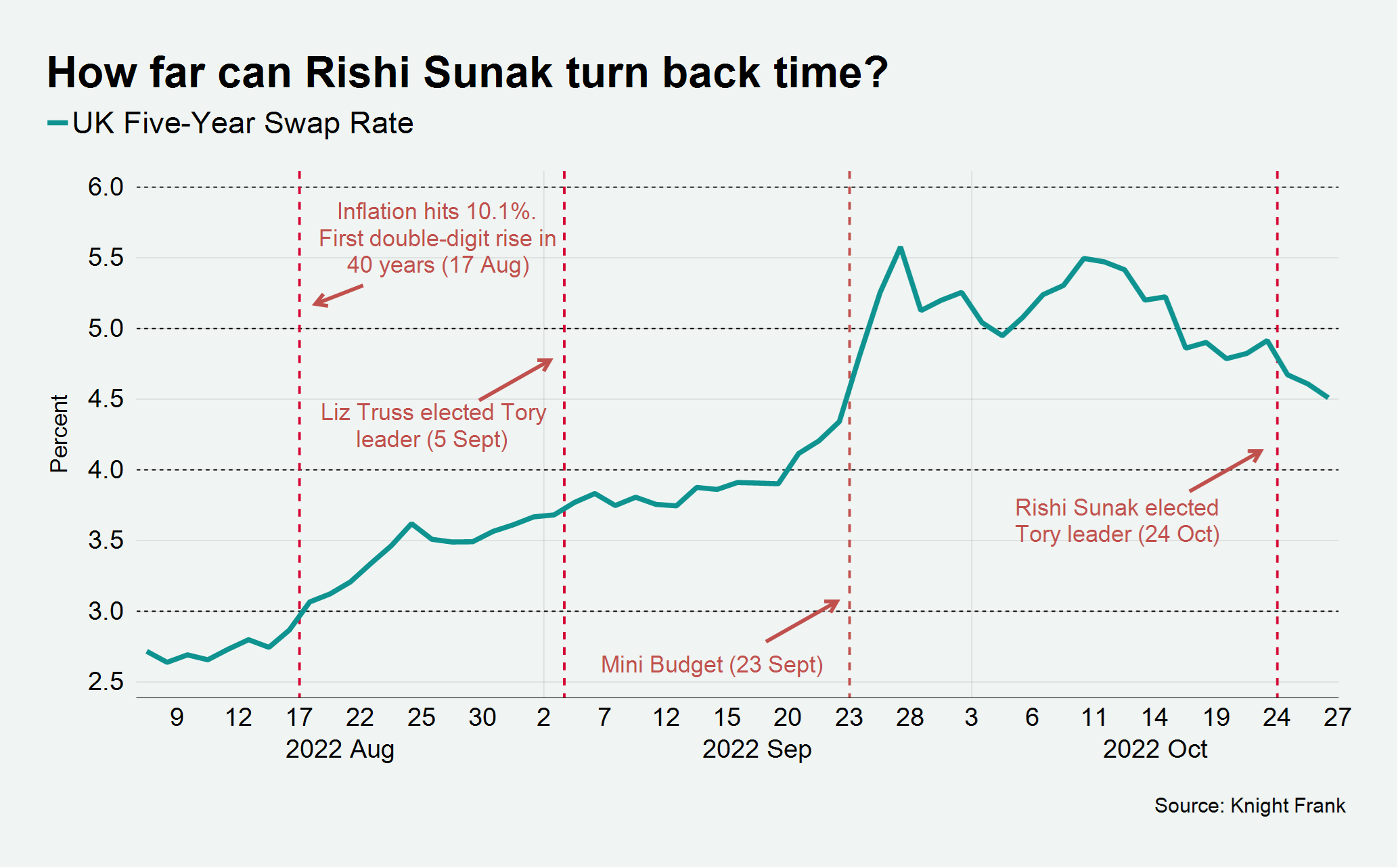Rishi Sunak: what he means for the UK property market
How far the new PM can wind back the clock is a significant question for the UK housing market.
3 minutes to read
In this article we look at:
- Whether new PM can 'turn back time' and restore confidence of debt markets
- The impact of the Mini-budget reversal on the economy
- How rising interest rates could impact house prices
Given the central role that spiralling mortgage rates played in the downfall of former Prime Minister Liz Truss, what happens next in the UK housing market will resonate strongly with the electorate
Whatever takes place under new Prime Minister Rishi Sunak after his predecessor’s brief time in office, there will be two initial stages.
First, he will need to wind back the clock and restore the confidence of debt markets.
After three days in office, there was evidence that the impact of the mini-Budget was close to being reversed.
By Wednesday, UK gilt yields had either fallen below their pre-mini-Budget level or were heading in that direction, depending on their maturity.
The five-year swap rate, which is used to price most UK mortgages, was hovering around 4.5%, a shade higher than it was before former Chancellor Kwasi Kwarteng got to his feet to outline the government’s economic plan on 23 September.

The rate may decline further, depending on the content of the Budget and accompanying report from the Office for Budget Responsibility on 17 November.
It was below 4% during the first two weeks of Liz Truss’s time in office in early September as the chart shows – a time when her broad intentions were well-known and inflation had already hit double digits.
So, how far Sunak manages to turn back the calendar will be telling and make a material difference to anyone buying a house or re-mortgaging.
The good news for house buyers is the cost of borrowing is falling as lenders are already dropping their rates to some extent.
Interest rates
What the new Prime Minister won’t be able to do in the short term is travel much further back in time than late August.
Interest rate expectations had been rising over the summer as energy costs pushed up inflation (which hit 10.1% in mid-August) and the Bank of England will raise its bank rate from its current level of 2.25% on 3 November.
My colleague Flora Harley has produced this analysis on how far interest rates could go and for how long.
However, once there is relative stability, the UK housing market can enter a second and more predictable phase.
House price pressure
More certainty will underpin transaction volumes but not necessarily prices. In fact, higher trading volumes would only hasten the price correction we expect will take place.
As mortgage rates normalise and more people roll off five-year fixed-rate deals, this will continue to put downwards pressure on prices. See our latest forecasts here.
We expect UK prices to revert to where they were in the summer of 2021, however low levels of unemployment and well-capitalised banks mean we do not expect the sort of double-digit price declines seen during the global financial crisis.
The stamp duty cut announced in the mini-Budget may even help liquidity to some degree. Any benefit was quickly eclipsed by the prospect of higher mortgage costs.
As we noted here, what the Chancellor gave away, the bond markets quickly took away again.
New Chancellor Jeremy Hunt will be hoping that the same cannot be said again next month.
Photo by Yaopey Yong on Unsplash